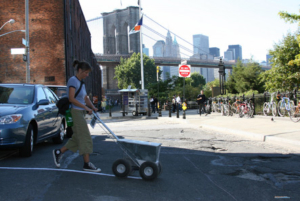 Workshop with Patricia Watts: Art & Agriculture: The Art of Food
Workshop with Patricia Watts: Art & Agriculture: The Art of FoodSaturday, February 25, 10am – 5pm, Glendening Annex
To register for this workshop: contact Sue Johnson srjohnson@smcm.edu
Over the last eighty years farming practices have made a radical shift with the number of family farms dropping from six million to basically two million nationally, and with much larger control of farmlands by corporations. In addition, there are concerns about pesticide use and genetic modifications of our foods. Many artists have developed public events, installations, and traditional artworks over the last decade meant to challenge the average consumer about the impacts of agriculture on culture and communities,
these include: Amy Franceschini or Future Farmers who developed an online interactive game to develop a database of food miles, how far food travels from the farm to the kitchen table; Matthew Moore, who created time-lapse videos of common vegetable growing in soil, which he installed inside a grocery store to enlighten consumers visually of the resources it takes to grow food; and, Alexis Rockman, who made a large-scale painting of farm animals that have been hybridized for optimum production including square tomatoes that will fit nicely inside boxes.
In this workshop we will look at the work of contemporary artists who combine an interest in how food is grown, distributed and consumed, while employing aesthetics. We will also join together for a convivial meal, where participants will contribute a communal food that they have either made or purchased, as well as share the list of ingredients used and where they came from including how many food miles the ingredients have traveled. We will discuss the cultural benefits of sourcing locally grown foods, and the economic and social costs of importing foods from other countries, as well as dietary considerations of eating seasonally. Participants will learn artistic strategies for engaging in conversations about our food system.
Prior to the workshop participants will review the ecoartspace S.O.S. Action Guide online to consider the work of New York artist Tattoo Tan whose art is urban farming, and other examples listed in the History of Art and Food section on pages 27-28. The guide is available for download for free at http://ecoartspaceactionguides.blogspot.com
Patricia Watts is a leader in the field of art and nature, and is writing an ongoing series of action guides on environmental projects that anyone (or organization) can replicate. In this workshop participants will learn about projects that have been successful in the past, and the step-by-step process in which to reimagine these projects in their local area (St. Mary’s County/SMCM). http://ecoartspaceactionguides.blogspot.com
ecoartspace is a nationwide nonprofit art organization specializing in artists who engage the human- nature interface. They have produced more than 40 exhibitions, 200 programs, working with 1,000+ artists in fifteen states nationally and 8 countries internationally. Approximately one million people have attended their programs produced in collaboration with over 300 organizations. http://ecoartspace.blogspot.com
Sponsored by The Department of Art and Art History, Artist House Residency Programs, Lecture and Fine Arts Committee, Environmental Studies Program, and the Museum Studies Program.
